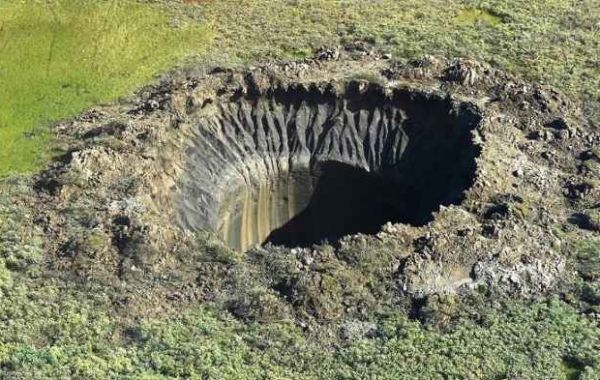What if, and because of the permafrost, that gases are trapped and they are hot gases, they will begin to melt a path to the surface, allowing the mud from the melt to fall into the hole underneath it. At some point, the gas column, (heat rises) reaches the surface and the top pops and falls in. Meanwhile, all of this pressurized gas bursts out into the lower pressure of the atmosphere.
Watch a series of bubbles in a mud boil. Just increase the pressures due to the more solid nature of the soil/earth. But will sough off like any other when heated. The soil must be a loose clay or some other composition that has enough water in it to firm it up and be deep enough.
It is also possible that the shaft is volcanic and just keeps filling in over the next bubble. In time, the pressure raises the plug to the surface. Rinse repeat.
I wonder what the composition is at 165 ft?
From a scientific standpoint, I think my models work better.
https://www.newsweek.com/siberia-crater-methane-explosion-arctic-1528881







